I was expecting to go through an emotional buzzsaw — again — when I signed up to take a look at The Last Of Us: Part II - Remastered. What I wasn't expecting was to be eventually educated on game theory in between rounds of some good ol' fashioned survival shooting action. I wasn't expecting pure fun.
I wrote about the original TLOU 2 for us when it came out four years ago, and many of the things I thought back then remain the same: TLOU 2 was very, very well made, but it's not what I'd call "fun," seeing as it explores how a gory vengeance quest of two young women drags both of them through hell and tears to pieces every good thing around them. It's a tragedy.
However, the entirety of TLOU 2 Remastered feels more like an art experience that's enhanced with features that serve both artistic and educational purposes. They help pull the player out of the emotional haze of the storytelling and add some modern fun, along with a window into how games are made. So let's dive in.
No Return
The roguelike/soulslike design philosophy has been blazing through the gaming realm for the past few years, so it wasn't a total surprise to see Naughty Dog add its own pieces of wood to the fire in the form of the "No Return" mode.
On the surface, No Return sounds like a curious mix: Take the TLOU characters and put them into roguelike combat "runs," where one has to survive a variety of encounters en route to a final, difficult confrontation. Death is permanent; you die, and you have to start over from the beginning. It sounded like a gimmicky add-on to me.
Many, many hours later, I find myself still thinking about the blown "run" I had a week ago and strategizing about how better to maximize my resources on the run I'm working on now, piece by piece. It's oddly addicting, and that's owed to the degree of detail and thought that seemed to go into wrapping the elements of the TLOU-verse and around this type of game format.
Before any new run, players choose which characters they want to use. You start with the cornerstones of TLOU 2, like Ellie or Abby, but also have the chance to unlock different characters, such as Joel, Dina, Tommy, Jesse, etc. Also, in a nice nod to a "class" system, each character has a different loadout of traits. Ellie is "balanced," comes with extra upgrade branches and a boost to her ability to consume supplements. Abby, however, is geared more toward melee combat (with those UFC arms, it makes sense), carrying a hammer and war ready with a "brawler" upgrade branch. Dina (perhaps my favorite TLOU 2 character) is an expert crafter of bombs and traps. This makes sure that each run feels and plays differently, which only adds to the challenge.
One feat No Return manages to pull off that distinguishes it from other roguelikes (like Hades, Dead Cells or Returnal) is that it somehow blankets the mode in the same sense of palpable, danger-is-imminent juju that's omnipresent in the story playthrough. While other roguelikes are up front about the waves of enemies you encounter, No Return maintains the series' style of slow-paced, tense and sloppily feral combat, where enemies lurk, search, creep and roam toward you or around your location. People get blown up or shot up or set on fire by your hand, and you can hear their friends call out their names as they die. The infected creatures do what they do, all to various horrifying effects.
During runs with Ellie, a projection room in the abandoned movie theater hideout functions as your "hub," complete with a gun locker, a workbench and a corkboard full of snapshots connected by lines of red string. This is the planning board, as each snapshot represents a mission-based step toward whatever final boss awaits. Each mission takes place in a variety of landscapes, such as the Jackson compound or the arcade or the supermarket.
There are two mission styles: There's assault, where you ward off "waves" of enemies; and there's "hunted," where you have to survive a diet of foes for a period of time. What stuck out to me was how well the TLOU movement, combat and crafting systems worked in the roguelike setting, where you have seconds of time to prepare. The "listen" mechanic helps locate enemies closing in on your position. You can use stealth and distraction tactics. You can lure people into traps. You're essentially in the same combat sequences you'd get in the story mode, just without walking convos or cut scenes.
An interesting side effect of all this — and I'm not sure this was the intention — was that No Return helped immerse me just a little more into the characters and their lives. How? It's a subtle detail; the starting "hubs" for characters are different. I told you about Ellie and the movie theater projection room, but Abby's home base is the room where the family lived at the top of the aquarium, decked out in Christmas lights and cheer. It makes one think that these "runs" could sometimes offer up a portal into the day-to-day lives of these survivors before any of the major story points took root.
As you successfully complete each mission, you start gathering ways to strengthen your character, such as guns, crafting materials, supplements, etc. However, in true roguelike fashion, all of these things can go away on the occasion of your demise.
Dying is part of life in the world of roguelikes, and I got pulled into the vortex for a bit because it was so well done. Mapping out runs, figuring out the best characters to use every time I started one, the rush of actually completing a mission and getting a step closer — and yes, even the pure agony of watching my character die and losing all of my stuff — was worth checking out. It's completely up to you if you think it adds enough value to the overall game package. If you've already played the PS4 version and aren't eager to walk through the story again, perhaps not. If you have a PS5 and have never played the series before, then I'd recommend it and look at this like a director's cut or the "bonus features" edition. This brings us to the next of the larger new features.
Lost Levels
These are the equivalent of "deleted scenes" from a movie, but instead of simply watching them, you get to play through them in all their pre-alpha, unfinished glory. There are three of them: a party sequence in the town/compound of Jackson, an extension of a level in the sewers, and a sequence where Ellie is hunting down a boar. Each of them is given a short intro by creator and director Neil Druckmann. As you play through them, you'll notice small speech bubbles in different spots. Clicking on the bubbles gives you a snippet of insight from one of the game's designers, either Pete Ellis or Banun Idris.
I was fascinated by some of the thinking that went into these ultimately cut levels, and each of them tackled a different aspect of the game. For instance, the Jackson level was meant to further convey the energy and vibe of the town and to further illustrate Ellie's mindset as she prepares to face Dina, who she has a crush on.
The sewer sequence was cut for the sake of pacing but also contained some visual tricks that wouldn't be used. For example, a narrow path/seemingly dead end I came across was originally supposed to be filled with water, with the thinking that you'd submerge yourself, look to the right, and find a much smaller tunnel to go through. According to Ellis, in testing, since the water was high, people didn't see the tunnel and then thought they had to backtrack. That was frustrating, so they eliminated it. Ellis also shared some insight about the visual cues they used, such as using light to more or less signify that the player was going the right way. There's an instance where Ellie has to crawl past a dead infected that's melted into the side of a tunnel, only to see the dead face of a loved one for a split second.
I ended up being most fascinated by the boar-hunting lost level because it was supposed to carry a hefty amount of narrative power as it pertains to Ellie's darkening mindset. Idris ran point on the explanations, sharing that what looks like the simple tracking of a blood trail to a boar inside a gas station was the latest of many, many iterations of the encounter. Was it a boss battle with several stages? Was that too "gamey?" Do you start empathizing with this innocent animal who might be the target of Ellie's escaping rage over the death of Joel? I thought it was a cool bit of insight that upon entering the gas station, there's some wreckage at the entrance. This was meant to hint at the boar's power to damage things, even when injured. It made the boar "feel larger," according to Idris, who also added that the moment also hinted at the question of: Who is really trapped in with who? This is a depth of thought that many people don't probably realize exists when it comes to making games, but making experiences is an art and science unto itself. These lost levels reminded me of that.
It was after experiencing No Return for a couple hours and distracting myself with the lost levels that I tore through the game's story mode one more time. As I said earlier, my thoughts on its message on the destructive power of vengeance remain unchanged, and I also have to agree with my colleague Chris: The original TLOU 2 already looked incredible, and while the remastered version looks better, it's not so much better that it feels like you're almost playing it for the first time. It doesn't reset an already very high bar.
Oh, and by the way, if you've been turned on to this game series for the first time because of the TV show and are thinking about trying The Last of Us: Part II - Remastered to get ready for next season ... good luck. And prepare yourself.
Score: 8.1/10
More articles about The Last of Us Part II



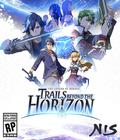

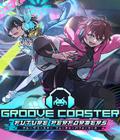
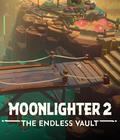
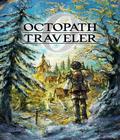
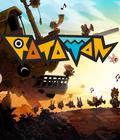
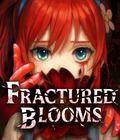

 The Last of Us Part II is a sequel to the action/adventure series set a few years after the original, revolving around Ellie as main character instead of Joel.
The Last of Us Part II is a sequel to the action/adventure series set a few years after the original, revolving around Ellie as main character instead of Joel.




























